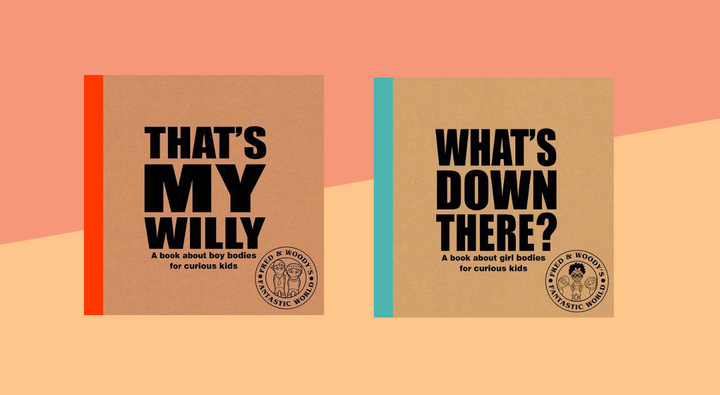
People seem to have real issues with talking about what’s between little girls’ legs – and a pair of new books are the latest example of body parts being shrouded in mystery.
Journalist Rosemary Bennett was sent two books about children’s bodies. While the one about boys has the definitive statement ‘THAT’S MY WILLY’ as a title, the one about girls is the more puzzled, euphemistic ‘WHAT’S DOWN THERE?’
The books both uses the real term between the pages, and emphasises the importance of being able to talk about bodies and specific body parts properly.
In publicity material, the publishers make it clear that they are in favour of the correct terminonlogy being used, citing a statistic from the Eve Appeal charity that says 44% of parents use euphemistic terms like ‘front bottom’ and ‘fairy’ for their daughters’ genitals, with 19% using ‘vagina’ and just 1% saying ‘vulva’.
It’s a shame, then, that the book uses one of the least informative ways possible to refer to female genitalia in its title, ‘down there’, while the book about boys’ bodies gets ‘willy’ right there on the cover in massive block capitals.
Part of it might be that there’s no vaginal equivalent of ‘willy’ in the English language – a friendly, childlike, non-clinical term for the penis. But why is that?And anyway, do we need to give children’s genitals cutesy nicknames? Can’t we just call them what they are – penises and vulvas?
You’ll sometimes see a raised eyebrow or a pained-looking grandparent when using a term like ‘vulva’, but that’s their problem. It’s not swearing, it’s the name of a body part. And it’s a body part you need to be able to talk about.
Kids’ vulvas require cleaning and checking, and toddlers are particularly prone to things like urinary tract infections when they start using grown-up toilets.
However, Eve Appeal’s study found 22% of parents avoid referring to their daughters’ genitals at all, and a third said anatomical terms should only be used when their daughter is 11 or older. These aren’t rude words. They’re accurate anatomical words, and the more they’re used, the better.
If we refuse to use the correct language, what are we teaching our children? That those areas are shameful? Open communication and conversation about bodies is especially beneficial in cases of abuse. Research has shown that children are much more likely to report being molested or touched inappropriately if they can talk freely about their bodies rather than feeling certain parts can’t be discussed.
Everyone, surely, wants their child to grow up confident in their bodies, aware of them and able to both look after them and enjoy them. Using the correct language from the get-go encourages that.
These books seem like they’re well-intentioned and informative, but why, oh why couldn’t the girls one be called ‘BEHOLD, MY VULVA!’? We all love our children and want the best for them – and we’re not helping them in any way by mystifying what’s in their underpants.
When contacted by HuffPost, the publisher of the books, Ruby Tuesday, confirmed the words “penis” and “testicles” appear in That’s My Willy (“penis” also features in What’s Down There?). And while the characters in the book for girls start out questioning, they all end the book understanding and using the words “vulva” and “vagina” correctly.”
Alex Waldron, author of the Fred & Woody books series, said: “I wrote That’s My Willy to teach my sons about the appropriateness of when and where they can explore themselves and to install in them the idea that it’s their body and they get to choose who gets to see or touch it. The ‘That’s My Willy’ line is a fun, repetitive shout on each chorus encouraging kids to join along. With What’s Down There? I wanted to deal with the same topics for girls but address the issue of the ‘correct’ terminologies.
“Confusion between the names Vulva and Vagina is current at the moment and it was an opportunity to insert the right names early on for a preschool audience within the story of the book. Through the guidance of Mandy Lancaster (PSHE trainer) and my publisher (Ruby Tuesday) we did the same with the boys’ book, making sure penis and testicle were used in the text.”